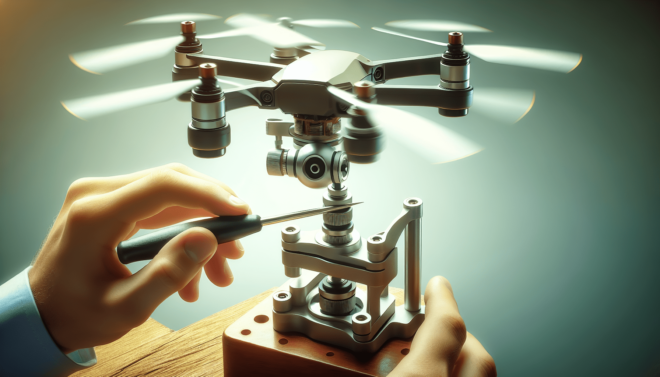How Do I Balance The Propellers On My Drone?
Have you ever experienced your drone being unsteady or making strange noises during flight? One common culprit for these issues can be unbalanced propellers. Balancing your drone’s propellers is crucial for smooth and stable flight. In this guide, we will walk you through the process of balancing the propellers on your drone to ensure optimal performance.
Why is balancing the propellers important?
Balancing the propellers on your drone is essential to prevent vibrations caused by an imbalance in weight distribution. When propellers are unbalanced, they can cause jitters, wobbling, and even damage to the motors and flight controller. By balancing the propellers, you can ensure that your drone operates efficiently and smoothly, resulting in better flight performance and longer lifespan.
When should you balance the propellers?
It is a good practice to balance the propellers on your drone whenever you notice any abnormalities during flight. Signs that indicate the need for propeller balancing include excessive vibration, erratic flying behavior, or unusual sounds coming from the motors. Additionally, balancing the propellers after any collision or crash is also recommended to avoid further damage to the drone.
Tools needed for balancing propellers
Before you begin the process of balancing the propellers on your drone, you will need a few essential tools to ensure a successful outcome. Here is a list of tools you will need:
- Balancing rod or shaft
- Propeller balancer
- Small adhesive weights
- Screwdriver
- A set of replacement propellers (optional)
Gathering these tools beforehand will make the balancing process smoother and more efficient.
Step-by-step guide to balancing propellers
Now that you have gathered all the necessary tools, let’s dive into the step-by-step process of balancing the propellers on your drone. Follow these instructions carefully to ensure precise balancing and optimal performance of your drone:
- Remove propellers: Start by removing the propellers from your drone. Use a screwdriver to carefully unscrew the propellers from the motors. Make sure to keep track of which propeller belongs to which motor to avoid confusion later on.
- Mount propellers on the balancer: Place each propeller on the propeller balancer, ensuring that the center hole of the propeller fits securely onto the balancing rod or shaft. The propeller should sit level on the balancer without any wobbling or tilting.
- Check for imbalance: Spin the propeller gently and observe if it settles in one position or continues to rotate. If the propeller consistently stops at a particular point, it indicates that there is an imbalance that needs to be corrected.
- Adjust weight distribution: To balance the propeller, you will need to add small adhesive weights to the lighter side of the propeller. Start by attaching a small weight and recheck the balance. Continue adding weights until the propeller remains level when spun on the balancer.
- Repeat the process: Repeat the balancing process for each propeller, making sure that all propellers are properly balanced before reinstalling them on your drone. Take your time and focus on achieving precise balance for each propeller.
- Reinstall propellers: Once all the propellers are balanced, securely tighten them onto the motors using a screwdriver. Make sure the propellers are attached firmly to prevent any loosening during flight.
- Test flight: After balancing and reinstalling the propellers, it is essential to conduct a test flight to ensure that the drone operates smoothly and without any issues. Monitor the flight performance carefully and make adjustments if necessary.
Tips for propeller maintenance
To maintain the balance and performance of your drone’s propellers, here are some essential tips to keep in mind:
- Regularly inspect the propellers for any signs of damage or wear and tear.
- Avoid over-tightening the propellers, as this can lead to stress on the motors and affect the balance.
- Replace damaged or worn-out propellers promptly to prevent any performance issues during flight.
- Clean the propellers regularly to remove dirt, debris, and other contaminants that can affect the balance and efficiency of the propellers.
By following these maintenance tips, you can ensure that your drone’s propellers remain in optimal condition and provide reliable performance during flight.
Conclusion
Balancing the propellers on your drone is a crucial maintenance task that can significantly impact the performance and longevity of your drone. By following the step-by-step guide provided in this article and incorporating proper maintenance practices, you can ensure that your drone operates smoothly and efficiently. Remember to balance the propellers whenever necessary and conduct regular inspections to prevent any issues during flight. Taking care of your drone’s propellers will not only enhance its performance but also prolong its lifespan for many more enjoyable flights ahead.

